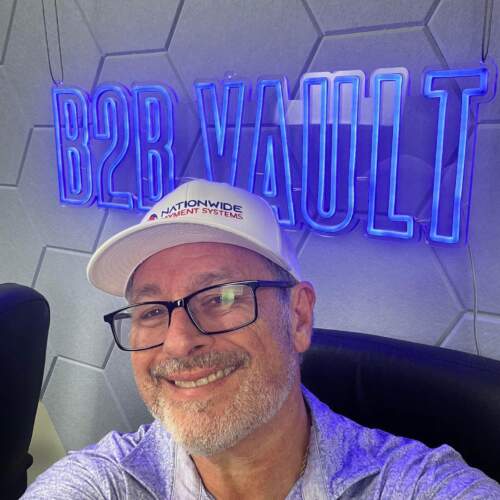Sales teams thrive on motivation, but maintaining high levels of engagement and drive can be a challenge, especially in high-pressure environments where Stress and Burnout are common. One increasingly popular way to keep sales teams energized and focused is through gamification. Gamification is the process of applying game-like elements—such as rewards, competition, and point systems—to non-game environments. When used effectively, gamification can help foster healthy competition, boost motivation, and drive better performance.
At its core, gamification taps into fundamental psychological and neuroscientific principles. The brain is wired to seek rewards, respond to challenges, and thrive on social recognition. By incorporating these elements into the sales process, sales leaders can create a more engaging and productive environment. Let’s explore how specific gamification techniques can inspire and sustain motivation within your sales team.
One of the most effective aspects of gamification is its ability to foster a sense of competition and achievement. Sales professionals are often driven by goals, and gamification leverages this natural inclination by turning everyday tasks into opportunities for recognition and rewards. Leaderboards, for example, are a popular gamification tool that allows sales reps to see how they rank against their peers. This creates a friendly competitive environment where team members are motivated to improve their performance to climb the rankings.
Neuroscience helps explain why this works. Competition activates the brain’s reward system, releasing dopamine, a neurotransmitter associated with pleasure and motivation. When salespeople see their names rising on the leaderboard or experience the thrill of surpassing a colleague, their brains reward them with a rush of dopamine. This encourages them to keep striving for success. However, it’s essential to strike a balance between healthy competition and overemphasis on winning, which could lead to stress or burnout. A well-designed system focuses on fostering a sense of achievement, where personal Growth is just as rewarding as outperforming others.
In addition to competition, gamification taps into the human need for recognition and rewards. Neuroscience shows that when people are recognized for their efforts, their brains release oxytocin, a neurochemical that fosters feelings of trust and connection. This sense of reward and appreciation strengthens their engagement with their work and their team.
In a sales environment, recognition can come in many forms. For example, creating a point system where sales reps earn points for completing certain tasks—such as making a set number of calls, closing deals, or securing a new client—can provide consistent reinforcement. These points can then be redeemed for tangible rewards like gift cards, extra time off, or public recognition during team meetings. Public recognition, in particular, has a strong psychological effect, as it not only validates individual efforts but also reinforces positive behaviors for the entire team.
Moreover, smaller, frequent rewards are often more effective than larger, infrequent rewards. The brain responds more positively to immediate feedback, so gamified systems that provide continuous, incremental recognition can keep motivation levels high throughout the entire sales cycle.
Gamification is also effective because it introduces structured challenges that encourage team members to push their limits in a fun and engaging way. For example, you might create weekly or monthly challenges that focus on specific sales activities, such as booking the most client meetings or generating the highest volume of qualified leads. The key is to make these challenges achievable but stimulating enough to spark genuine effort.
Neuroscientifically, challenges engage the brain’s problem-solving centers, which crave novelty and stimulation. Overcoming challenges also activates the reward system, creating a sense of satisfaction that motivates individuals to take on the next challenge. Badges or virtual trophies can be awarded for completing these challenges, serving as a visual representation of their accomplishments. Much like in video games, these badges offer a sense of progress and status, which can be highly motivating for sales professionals.
Incorporating both individual and team-based challenges into the gamification strategy can also foster collaboration and camaraderie. While personal achievement is important, group challenges encourage team members to work together toward a common goal, strengthening team cohesion and creating a more supportive work environment.
One of the greatest advantages of gamification is its ability to provide continuous feedback on performance. In a traditional sales environment, feedback is often limited to monthly or quarterly reviews, but gamified systems offer real-time updates on how team members are progressing toward their goals.
Progress tracking through visual dashboards or apps allows sales reps to see where they stand in relation to their targets and milestones. Neuroscience reveals that the brain responds well to immediate feedback, which reinforces learning and behavior change. When team members can instantly see the results of their efforts, they are more likely to stay motivated and engaged.
Regular feedback also provides an opportunity for sales managers to step in and offer Coaching or support when needed. For example, if a sales rep is consistently falling short in a particular area, a gamified system can alert the manager, who can then provide tailored advice to help the rep improve. This creates a culture of continuous learning and improvement, which benefits both the individual and the team as a whole.
While competition and rewards can be effective motivators, it’s important to recognize that different salespeople are driven by different things. A successful gamification strategy is one that can be personalized to meet the needs and preferences of each team member.
Neuroscientific research shows that the brain’s reward system is highly individualized, meaning that what motivates one person may not motivate another. Some salespeople may be driven by the thrill of competition, while others may find more satisfaction in achieving personal milestones or receiving public recognition. By offering a variety of challenges, rewards, and feedback mechanisms, you can create a gamified system that caters to different personalities and motivational drivers.
Customization can also extend to the types of rewards offered. While some team members may be motivated by monetary incentives, others might prefer experiences, professional development opportunities, or even extra time off. By tailoring the gamification experience to individual preferences, you increase the likelihood of sustained motivation and engagement.
Ready to elevate your sales team’s motivation with innovative gamification techniques? Learn how Braintrust’s NeuroSelling approach can help you design personalized, neuroscience-backed strategies that inspire lasting performance. Visit Braintrust Growth to get started today.
The post Gamification Techniques to Boost Sales Team Motivation appeared first on Braintrust Growth.
I come from a large Italian family. I’m number seven in the line of ten kids!
When my dad passed away some years ago, I was fortunate enough to be there as the end was coming. I was standing just to the right of his hospital bed; he was lying there with his eyes closed. All of a sudden, Dad opens his eyes. He looks up at the ceiling with a look of peace – and maybe accomplishment – on his face. Then he closes his eyes for the last time. I guess out of instinct, I reached down and kissed him on that prickly cheek one last time. My dad left a legacy in that life well lived! A legacy based on three main principles: Family, Service, and Dedication. I do what I do to carry on that legacy to the best of my ability.
















































BabyBoomer.org is an online membership community created by and for the Baby Boomer Generation. Boomers, and those who service and support them, are welcome to join our community accessing all general topics.
Notifications
